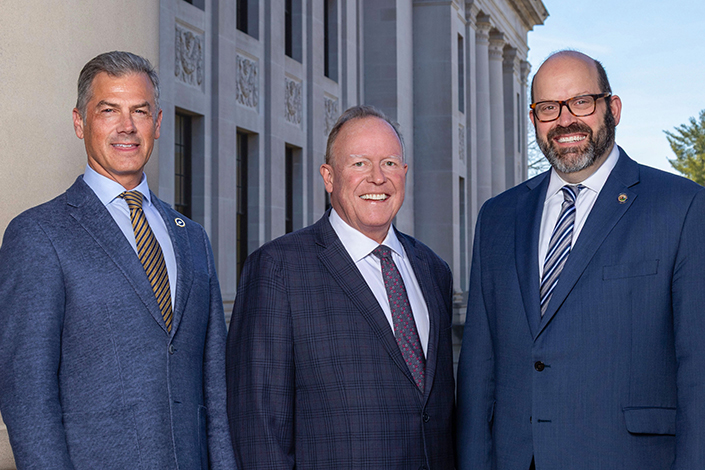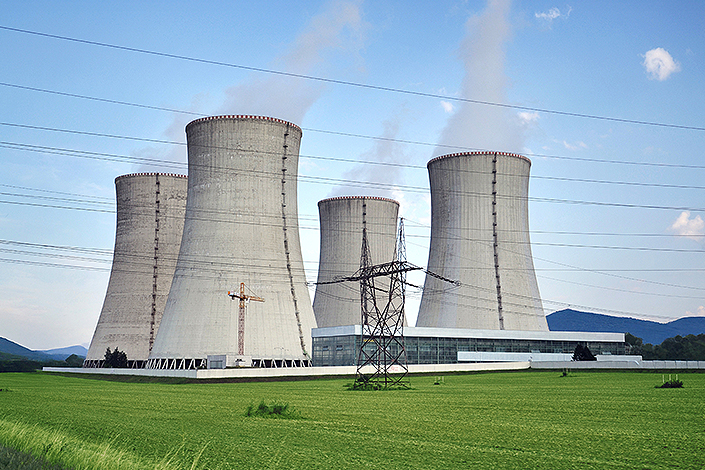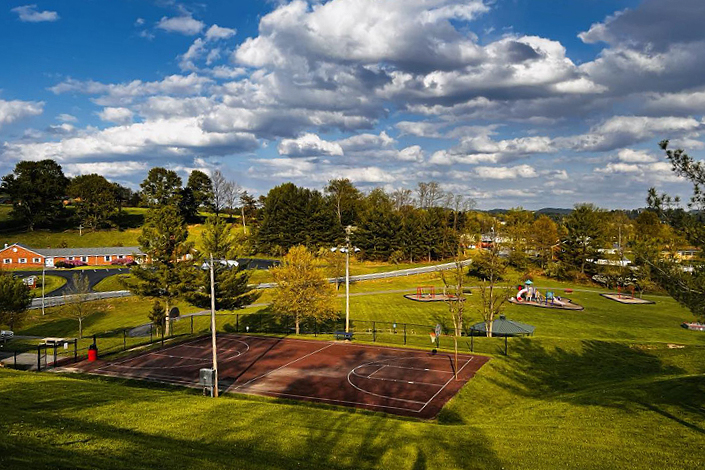By Kenzie Dye
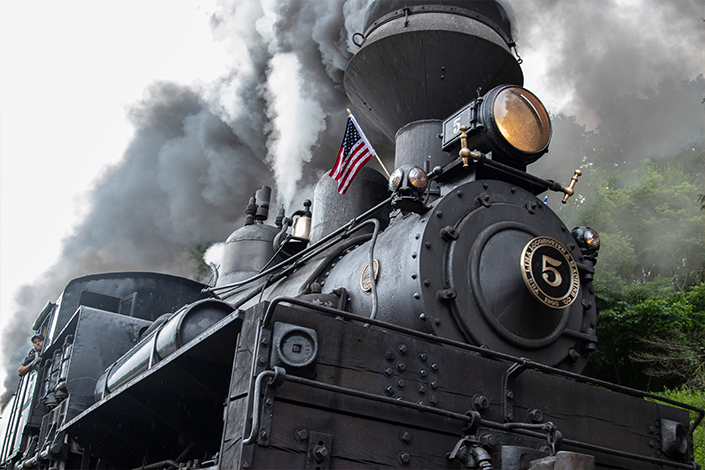
West Virginia’s travel regions boast endless experiences for history buffs of all ages. Below are nine sites visitors won’t want to miss when planning a trip to the Mountain State.
Starting in the Eastern Panhandle, Harpers Ferry’s unique history encompasses more than just one event, date or individual. Harpers Ferry was the site of the first successful implementation of interchangeable manufacturing, America’s first successful railroad, John Brown’s attack on slavery, the largest surrender of federal troops during the Civil War and the education of formerly enslaved individuals in one of the earliest integrated schools in the U.S.
A few notable historical figures who spent time here are Thomas Jefferson, George Washington and John Brown. On October 25, 1783, Jefferson visited Harpers Ferry to see the confluence of the Potomac and Shenandoah rivers from a rock that now bears his name, Jefferson Rock. As the champion and first president of the Patowmack Company, Washington visited Harpers Ferry in the summer of 1785. Over the course of two days, his party inspected the river to assess the need for bypass canals and channels. In 1794, Washington used his familiarity with Harpers Ferry to create a new federal armory and arsenal site. On the night of October 16, 1859, Brown and 21 followers captured the U.S. Armory, Arsenal and Rifle Factory at Harpers Ferry. Brown’s raid only lasted 36 hours as he underestimated how quickly people would rise up against what they viewed as insurrection. Brown was captured two days later.
Moving down to the Potomac Highlands, the town of Cass was founded in 1901 by the West Virginia Pulp and Paper Company. Built as a company town for loggers working in the nearby mountains, Cass saw the construction of its railroad to transport lumber to the town’s mill in the very year it was founded. The railroad eventually expanded to the top of Bald Knob, the state’s third-highest mountain peak, and in 1942 was sold to Mower Lumber Company, who managed it until July 1960. In 1961, Cass was incorporated into the state parks system, and in 1977, the entire company followed suit. Since becoming a state park, Cass Scenic Railroad’s most popular attraction is a train ride to the overlook at Bald Knob. The Durbin Greenbrier Valley Railroad provides train excursions Tuesday-Sunday as well as special events throughout the year.
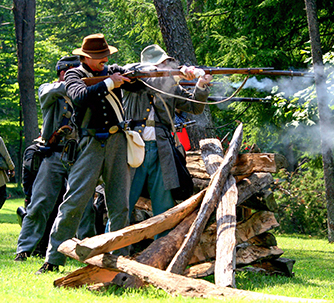
Located in the Mountain Lakes region, Carnifex Ferry Battlefield State Park is a significant Civil War battle site. Part of the Civil War Discovery Trail, which links more than 300 historical sites across 16 states, the park commemorates the 1861 Battle of Carnifex Ferry. This Civil War battle marked the failure of a Confederate effort to regain control of the Kanawha Valley as West Virginia’s movement for statehood continued.
The New River Greenbrier Valley is home to one of West Virginia’s coolest small towns. Lewisburg was named for surveyor Andrew Lewis and was the site of many battles during Lord Dunmore’s War in 1774. Later, Lewisburg would play a vital role during the Civil War when several of its buildings were turned into hospitals and barracks.
One of West Virginia’s most interesting pieces of history that occurred in the Hatfield-McCoy Mountains region is the Hatfield-McCoy feud. William Anderson “Devil Anse” Hatfield led the Hatfields, while Randle McCoy led the McCoys. The feud’s origins trace back to the end of the Civil War. Devil Anse, a Confederate soldier, and some family members left the army to join the Logan Wildcats, a local militia. Randle McCoy’s brother, Asa Harmon McCoy, fought for the Union. In 1865, Asa was killed while recovering from a battle wound, with rumors suggesting involvement by Devil Anse and the Logan Wildcats.
In the late 1870s, a land dispute arose between Devil Anse and Randle’s cousin, Perry Cline. Anse won the case, gaining Cline’s 5,000 acres, but the McCoys suspected political influence swayed the court’s decision. Tensions escalated when Randle accused Anse’s cousin, Floyd Hatfield, of hog theft. The trial ended with a McCoy juror siding with the Hatfields, leading the McCoys to feel cheated. This decision marked the beginning of increased violence between the families.
Another notable piece of West Virginia history in this area is The Matewan Massacre. In May 1920, 12 men were killed in Matewan in a gun fight that would come to be known as the Matewan Massacre. The local police and townspeople faced off against hired guns from the Baldwin Felts Detective Agency. During the battle, Albert Felts fired the first shot but was killed by Matewan Chief of Police Sid Hatfield. Hatfield warned that the agency had no legal warrants to evict Matewan citizens. Felts attempted to arrest Hatfield, which led to the massacre.
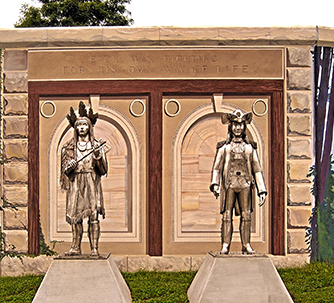
In the Metro Valley, Tu-Endie-Wei State Park, located at the confluence of the Kanawha and Ohio rivers in Point Pleasant, is home to an 84-foot granite monument commemorating the 1774 Battle of Point Pleasant. This significant battle, regarded by some as the first of the American Revolution, broke Native American power in the Ohio Valley and ended a frontier war. It also thwarted a potential British-Native American alliance, which could have changed the revolution’s outcome.
Located in the Mid-Ohio Valley, Fort Boreman is the site of a Civil War fort on a hilltop that overlooks a scenic valley created by the confluence of the Little Kanawha and Ohio rivers in Parkersburg. The fort was built by Union troops to protect the Baltimore and Ohio Railroad terminal and key commercial river facilities in the valley. The Fort Boreman site was added to the National Register of Historic Places in 2003 and is open year-round, weather permitting.
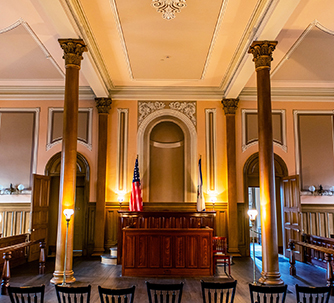
Moving up to the Northern Panhandle, West Virginia Independence Hall in Wheeling is considered the birthplace of the Mountain State. While using this building as his office, Governor Francis Harrison Pierpont composed a telegram to President Abraham Lincoln urging him to sign the bill for West Virginia statehood. In December 1862, Lincoln received the statehood bill for the creation of West Virginia, and on December 31, Lincoln signed the bill. West Virginia achieved statehood on June 20, 1863. West Virginia Independence Hall is the site of the first West Virginia Constitutional Convention and the first and second Wheeling Convention. Wheeling is unique for serving as the capital of two states, and West Virginia is the only state formed from the Civil War.
Lastly, Mountaineer Country is home to Prickett’s Fort State Park in Fairmont, WV. Overlooking the confluence of Prickett’s Creek and the Monongahela River, this log fort is a re-creation of the original 1774 fort that served as a refuge from Native American war parties on the western frontier of Colonial Virginia. Up to 80 families from the surrounding countryside would stay here as long as the threat existed.






